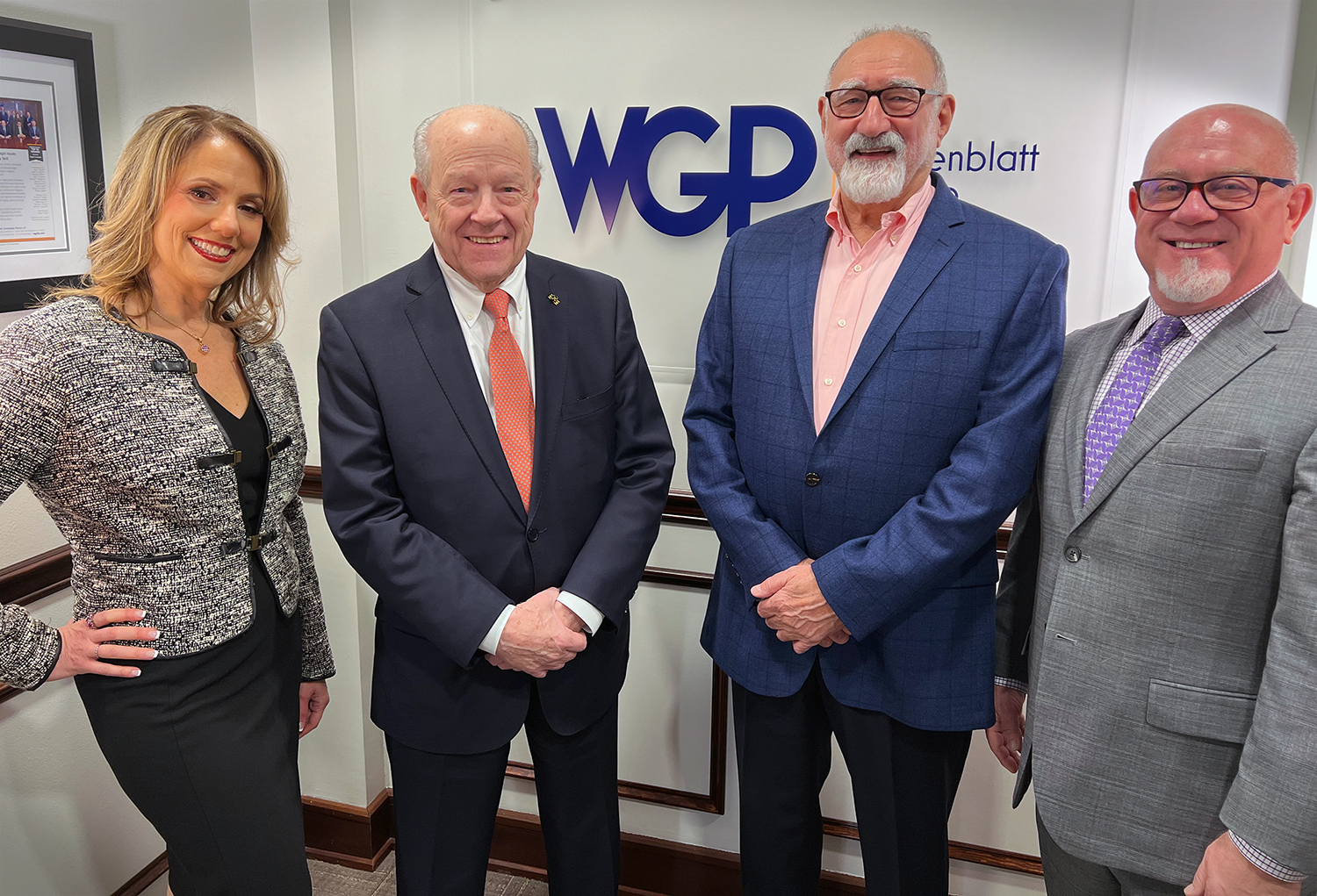 The program started with screening of the NYPD’s Diabetes Awareness training video. This 2013 video provides New York police officers information about diabetes, generally, and the effects of severe hypoglycemia (low blood sugar) on persons with diabetes. The video also features Geri Spollett, MSN, ANP-CS, CDE, past ADA President, Health Care & Education, explaining and demonstrating the various diabetes devices police officers might encounter.
Then, Dr. Lorber, Endocrinologist, Certified Diabetes Educator and long-time ADA volunteer, explained in greater detail the processes that may cause a person experiencing severe hypoglycemia to appear intoxicated, under the influence of drugs, irritable, or even combative. Dr. Lorber also reviewed some of the ways officers could recognize a person suffering a diabetes emergency, including medical alert jewelry, wallet cards, diabetes supplies and certain behaviors.
Alan Yatvin, immediate past chair of Legal Advocacy for the ADA, then spoke to the officers about some of the legal issues involved in officer interaction with persons with diabetes. This portion of the program started with the playing of a video, with audio, recorded by a police dashboard camera following the stop of an erratic driver outside Las Vegas, in Henderson, Nevada. The video showed Adam Greene, himself the son of a Highway Patrolman, being forcibly removed from the vehicle, restrained by six officers and kicked repeatedly while lying on the ground. Only afterward, upon searching his pockets and finding diabetes supplies, did the police recognize that Greene had diabetes, was suffering from severe hypoglycemia and was only semi-conscious. Yatvin was pleased to note the training sergeants’ spontaneous negative vocal reactions to the officer conduct in the video.
Yatvin then reminded the audience about the facts in Graham v. Connor, 490 U.S. 386 (1989), a landmark United States Supreme Court case. Graham established that use of force by police officers against a free person is to be evaluated under the Fourth Amendment to the Constitution and that the reasonableness of any force used must be viewed from the perspective of an objectively reasonable police officer, under all the circumstances presented. Although this proposition is widely relied upon by police and police trainers, few recall the facts which gave rise to the case. Yatvin reviewed those facts for the officers:
The program started with screening of the NYPD’s Diabetes Awareness training video. This 2013 video provides New York police officers information about diabetes, generally, and the effects of severe hypoglycemia (low blood sugar) on persons with diabetes. The video also features Geri Spollett, MSN, ANP-CS, CDE, past ADA President, Health Care & Education, explaining and demonstrating the various diabetes devices police officers might encounter.
Then, Dr. Lorber, Endocrinologist, Certified Diabetes Educator and long-time ADA volunteer, explained in greater detail the processes that may cause a person experiencing severe hypoglycemia to appear intoxicated, under the influence of drugs, irritable, or even combative. Dr. Lorber also reviewed some of the ways officers could recognize a person suffering a diabetes emergency, including medical alert jewelry, wallet cards, diabetes supplies and certain behaviors.
Alan Yatvin, immediate past chair of Legal Advocacy for the ADA, then spoke to the officers about some of the legal issues involved in officer interaction with persons with diabetes. This portion of the program started with the playing of a video, with audio, recorded by a police dashboard camera following the stop of an erratic driver outside Las Vegas, in Henderson, Nevada. The video showed Adam Greene, himself the son of a Highway Patrolman, being forcibly removed from the vehicle, restrained by six officers and kicked repeatedly while lying on the ground. Only afterward, upon searching his pockets and finding diabetes supplies, did the police recognize that Greene had diabetes, was suffering from severe hypoglycemia and was only semi-conscious. Yatvin was pleased to note the training sergeants’ spontaneous negative vocal reactions to the officer conduct in the video.
Yatvin then reminded the audience about the facts in Graham v. Connor, 490 U.S. 386 (1989), a landmark United States Supreme Court case. Graham established that use of force by police officers against a free person is to be evaluated under the Fourth Amendment to the Constitution and that the reasonableness of any force used must be viewed from the perspective of an objectively reasonable police officer, under all the circumstances presented. Although this proposition is widely relied upon by police and police trainers, few recall the facts which gave rise to the case. Yatvin reviewed those facts for the officers:
On November 12, 1984, Graham, a diabetic, felt the onset of an insulin reaction. He asked a friend, William Berry, to drive him to a nearby convenience store so he could purchase some orange juice to counteract the reaction. Berry agreed, but when Graham entered the store, he saw a number of people ahead of him in the checkout line. Concerned about the delay, he hurried out of the store and asked Berry to drive him to a friend’s house instead. Respondent Connor, an officer of the Charlotte, North Carolina, Police Department, saw Graham hastily enter and leave the store. The officer became suspicious that something was amiss and followed Berry’s car. About one-half mile from the store, he made an investigative stop. Although Berry told Connor that Graham was simply suffering from a sugar reaction, the officer ordered Berry and Graham to wait while he found out what, if anything, had happened at the convenience store. When Officer Connor returned to his patrol car to call for backup assistance, Graham got out of the car, ran around it twice, and finally sat down on the curb, where he passed out briefly. In the ensuing confusion, a number of other Charlotte police officers arrived on the scene in response to Officer Connor’s request for backup. One of the officers rolled Graham over on the sidewalk and cuffed his hands tightly behind his back, ignoring Berry’s pleas to get him some sugar. Another officer said: I’ve seen a lot of people with sugar diabetes that never acted like this. Ain’t nothing wrong with the M. F. but drunk. Lock the S. B. up. Several officers then lifted Graham up from behind, carried him over to Berry’s car, and placed him face down on its hood. Regaining consciousness, Graham asked the officers to check in his wallet for a diabetic decal that he carried. In response, one of the officers told him to shut up and shoved his face down against the hood of the car. Four officers grabbed Graham and threw him headfirst into the police car. A friend of Graham’s brought some orange juice to the car, but the officers refused to let him have it. Finally, Officer Connor received a report that Graham had done nothing wrong at the convenience store, and the officers drove him home and released him. At some point during his encounter with the police, Graham sustained a broken foot, cuts on his wrists, a bruised forehead, and an injured shoulder; he also claims to have developed a loud ringing in his right ear
Following the presentation, Yatvin and Lorber made available copies of diabetes awareness materials: The ADA police poster, Diabetes is serious: It can be life threatening!; Philadelphia Police Department Assist Officer; and the ADA Diabetes Medical Alert wallet card which appeared in the January 2014 issue of Diabetes Forecast magazine. Yatvin and Lorber then spent about 20 minutes speaking with individual sergeants, answering questions and providing information on diabetes resources. The number of people with diabetes continues to climb. According to the Centers for Disease Control and Prevention there are nearly 26 million Americans with diabetes. Knowing how to respond to a potentially life threatening diabetes emergency is becoming increasingly important for law enforcement officers and other first responders. Through his pro bono work with the American Diabetes Association, Alan Yatvin is working to bring police trainers together with medical and legal professionals to successfully collaborate on matters of importance to law enforcement and the diabetes community.




